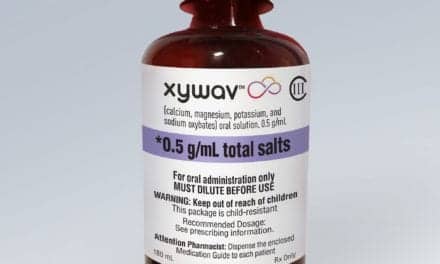New clinical trial data shows that the medication Xywav, produced by Jazz Pharmaceuticals, significantly reduces the long sleep duration, sleep inertia, and excessive daytime sleepiness that are typical hallmarks of the sleep disorder idiopathic hypersomnia.
After becoming the first and only treatment approved by the U.S. Food and Drug Administration in August 2021 for patients living with idiopathic hypersomnia, Xywav became commercially available for the treatment of the often chronic and debilitating sleep disorder last year.
The latest data on the efficacy of Xywav was produced from a phase 3 multicenter, placebo-controlled, double-blind, randomized study. Results were published in The Lancet Neurology journal.
The results of the clinical trial showed clinically meaningful and statistically significant differences with Xywav compared to placebo in changes in several metrics, including the Idiopathic Hypersomnia Severity Scale (IHSS) and the Epworth Sleepiness Scale (ESS) score, which is a questionnaire that measures sleepiness levels during the day.
“The full data set from the largest global phase 3 trial in adults with idiopathic hypersomnia represents a major advance in this condition and will enable physicians to make more informed, evidence-driven treatment decisions,” Yves Dauvilliers, MD, PhD, lead investigator of the study and director of the Sleep and Wake Disorders Centre in the Department of Neurology at the Gui de Chauliac Hospital in Montpellier, France, says in a statement. “The trial results demonstrate that Xywav offers significant and clinically meaningful improvements to multiple aspects of this debilitating condition that can benefit the sleep and daily lives of adults diagnosed with this unique sleep disorder.”
[RELATED: FDA Grants Jazz Pharmaceuticals New Exclusivity Rights for Hypersomnia Medication]
In the trial, investigators at 50 centers in seven countries enrolled a total of 154 adults aged 19 to 75 diagnosed with idiopathic hypersomnia. Following a screening period, the study had three dosing periods. First, participants received open-label Xywav for 10 to 14 weeks, until their individual doses were optimized.
The optimized dose ranged from 2.5 to 9. grams per night. Patients then received stable, optimized doses for two weeks, with median doses of 4.5 ((interquartile range [IQR], (3.0 to 5.0) grams nightly (one dose regimen, 21 patients) and 7.5 (IQR 6.5 to 8.1) grams nightly (two-dose regimen, 93 patients), with 40 patients changing dosing regiments once or more times. During a double-blind randomized withdrawal period (DBRWP), patients received either the optimized stable dose of Xywav or a placebo for two weeks.
Participants entered the study with a mean (SD) ESS score of 16.1 (3.6), indicating substantial excessive daytime sleepiness. During the Xywav open-label titration and optimization period, ESS scores decreased, indicating improvement, which was maintained during the stable dose period (SDP).
The study’s primary endpoint was a change in the ESS scores as measured from the end of the SDP to the end of the DBRWP. Participants randomized to continue Xywav had stable mean (SD) ESS scores [from 6.3 (4.3) to 7.0 (5.0)], in contrast to those randomized to placebo whose mean (SD) ESS scores increased from 5.8 (3.7) to 13.3 (4.1) points, indicating worsening. The differences between the two group’s mean ESS scores, [5.8 (3.7) to 13.3 (4.1)] were statistically significant, [95% Cl: -6.5 points (-8.0, -5.0), P<0.0001]. An ESS score of below 10 is considered normal among those without a sleep disorder.
Participants entered the study with a mean (SD) IHSS score of 32.1 (8.0) indicating severe disease. During the Xywav open-label titration and optimization period, IHSS scores decreased, indicating improvement, which was maintained during the SDP.
On the key secondary endpoint, participants randomized to continue Xywav had stable mean IHSS scores (15.5 [9.2] to 16.9 [8.1]), in contrast to those randomized to placebo whose mean (SD) IHSS scores increased from (15.2 [7.8] to 28.5 [9.0]), indicating worsening. The difference in change in IHSS score was statistically significant (estimated median difference [95% CI: -12.0 (-15.0, -8.0); P<0.0001]. A score of 22 or below is considered the best cutoff to differentiate individuals with untreated idiopathic hypersomnia from a control population without sleepiness.
Treatment-emergent adverse events reported by more than 10 % of the participants in the trial included nausea (22%), headache (18%), dizziness (12%), anxiety (11%), and vomiting (11%). Most participants experienced adverse events that were mild or moderate. Four participants experienced nine serious adverse events, none of which were deemed to be related to the study drug. No deaths occurred during the trial.





